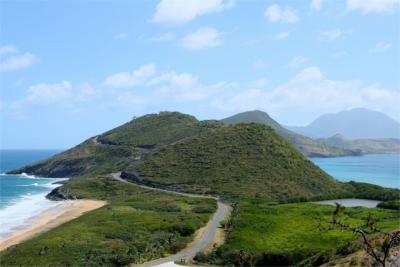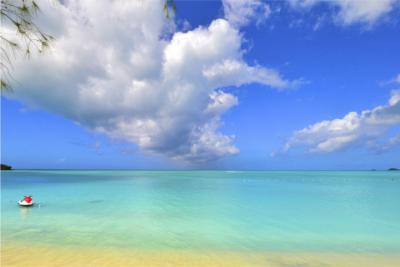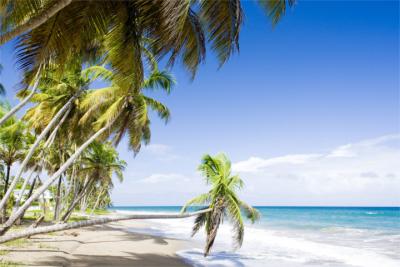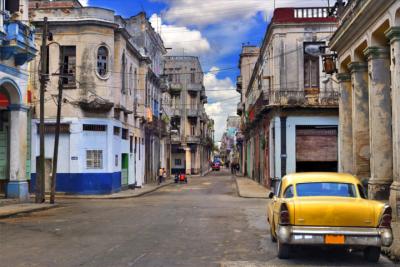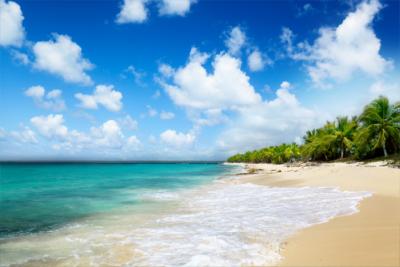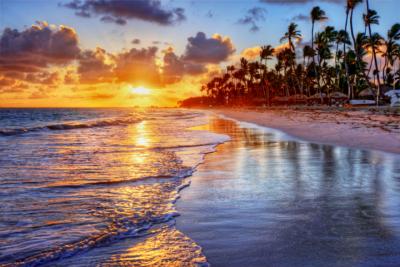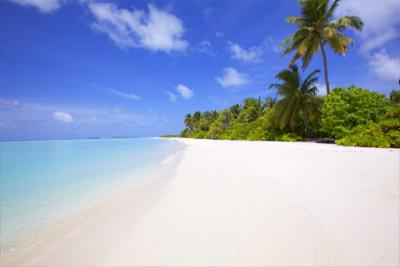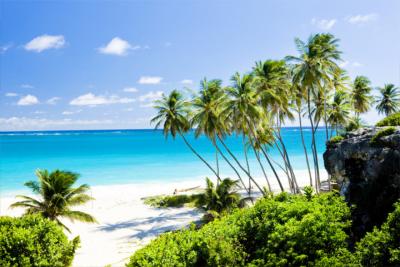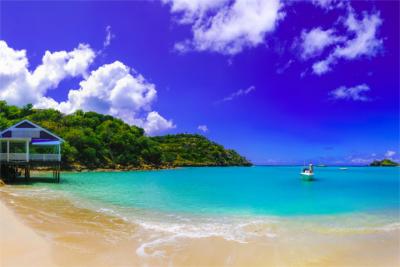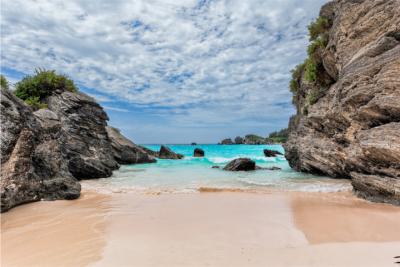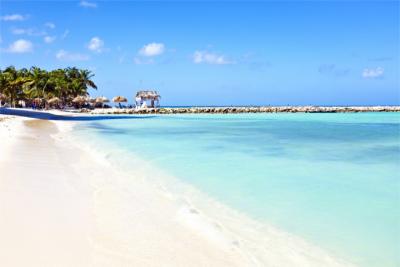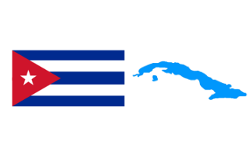Travel Offers
Travelmyne Featureprint
Distance
Cuba – The Origin of Cigars, Rum and Salsa
When you think of Cuba, you can almost feel the country's rhythmic music, smell the cigars or taste a smack of Cuban rum. But that is not all: Despite many historical and economic difficulties, the island state is full of vitality. It makes you want to dive into the Caribbean sun paradise with its great beaches and the wonderful sea.
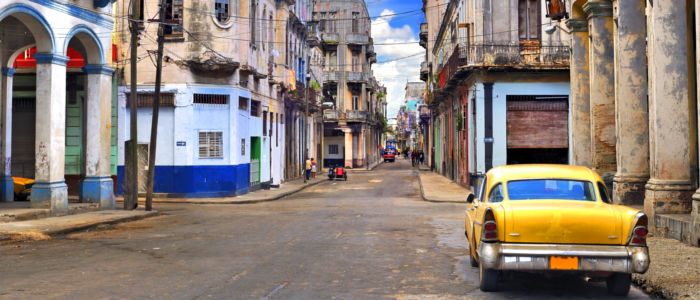
Geography - In the middle of the Caribbean with gorgeous beaches
The island state Cuba is located in the Caribbean and constitutes one part of the Antilles. Besides the main island of the same name, the greatest island in the Caribbean, almost 4,200 other island belong to the state. A prominent example is the Isla de la Juventud as the second biggest Cuban island in the south-west of the archipelago. The main island is mostly flat but it also contains several mountain ranges and hilly landscapes. Tropical climate creates consistently warm temperatures all year. You find particularly pleasant weather in the dry and not extremely hot winters.

Nature - Palm trees, tobacco plantations and exotic animals
Characteristic of the island is the Cuban silver palm, which reaches heights of up to 40 metres. Mangroves, stone pines and mahogany trees also dominate the picture, while the higher regions are covered in conifer forests. The vast tobacco and sugar cane plantations are also typical of Cuba. In the rich fauna you find rare species like the sea cow, the crocodile, the hummingbird - which is the smallest bird on earth measuring 63 millimetres - or the world's smallest frog. Cuba fascinates with its underwater world, which is populated by colourful creatures such as the parrotfish, rays, blowfish and turtles, which swim along beautiful corals. Since there are hardly any toxic animals in Cuba, you can explore the treasures of the islands safely.

Natural sights - Breathtaking and varied landscapes
Cuba's nature can best be experienced in the Sierra Maestra National Park, which covers an area of 380 km². The parts of the coast in the south offer a breathtaking view of the Caribbean with its rocks and caves. Cuba's highest mountain, the Pico Turquino, is also located in this park. The Alejandro de Humboldt National Park in Baracoa attracts visitors with its rich treasure of natural beauty. Two prominent examples among the island state's endless dream beaches are those near Varadero and Cayo Santa Maria. The province Pinar del Río, on the other hand, is known for its wonderful landscape and hidden caves. One of its highlights are the limestone formations of the Viñales Valley. Soroa, "Cuba's rainbow" allures visitors with its great waterfall.

Culture - Historical impressions and lively people
Cuba was discovered by Columbus on his first journey in 1492. The colonial rule of the Spanish shaped the island states significantly. In modern times, the revolution in 1959 presented an important turning point. Back then Fidel Castro and the Argentine Che Guevara drove the dictator Batista away. As a consequence Cuba developed into a socialist country and tensions with the USA occurred. The cold war between the United States and the Soviet Union culminated in the Cuban missile crisis in 1962. Economic sanctions were issued for the islands state, which still apply today in parts. The Cubans live quite isolated from the rest of the world, which is why the holidaymaker comes upon a world as it was 50 years ago. Havana is still filled with the historical cars from the 1950s. Despite these hard circumstances, the Cubans are an energetic, lively nation.
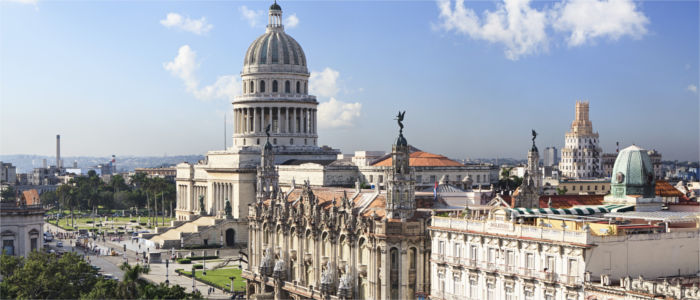
Cultural sights - Historical buildings from Havana's past
The highlight of a journey through Cuba is probably a trip to the capital Havana, a colourful, lively metropolis which is steeped in history. The latter is especially true of the old town, which accommodates many testimonies of colonial times, and the natural harbour. The Capitolio National with its dome or the Revolution Square are distinctive elements of the city. At Havana's coast you find the Acuario Baconao, in which visitors can watch sharks, sea lions, numerous species of fish and can even swim with dolphins. The second biggest Cuban city, Santiago de Cuba, is also worth a visit. Since Cuba's struggle for independence began there, it is considered the "cradle of revolution". The many historical buildings display the city's past. In addition, you can visit a rum distillery or a museum, which provides an insight into the history of the carnival with its many masks and costumes on exhibition. Besides the beautiful landscape, the province Pinar del Río is exemplary for tobacco growing. On the plantations and in the factories visitors can see how the famous cigars are produced.

Experience - Dancing mambo and enjoying Cuban food
You can go out especially well in the cities Havana and Santiago de Cuba. The variety of clubs, bars, theatres and other cultural institutions is gigantic. Everywhere you can join the exuberant vitality, which is conveyed by the Cuban dance and music. Numerous versions of the dances salsa, mambo, rumba or cha-cha-cha, which originated in Cuba, display the islanders' vivacious and cheerful culture. Rice dishes with black or red beans are very common in Cuba, often served with chicken. Seafood and soups are other important elements of the cuisine, which is traditionally very spicy and aromatic. Rum, soda, lime, sugar and mint leaves are the ingredients for Cuba's national drink, the Mojito. You can get little snacks all around the city – even sold from ground floor windows. On the art market in Havana you experience the typical daily life of the Caribbean state and you may find a handmade souvenir. Rum, cigars or CDs with Caribbean music are popular gifts.
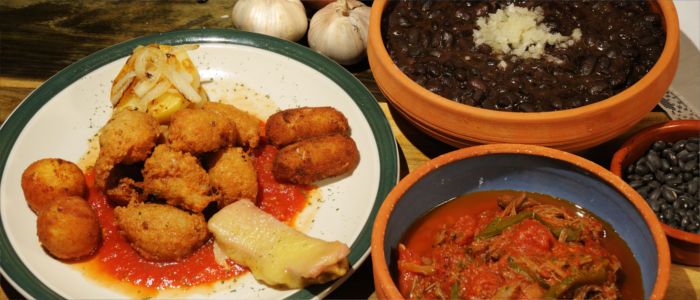
Activities - Special experiences in paradise
Miles of fine, white sandy beach, turquoise sea and a backdrop of palm trees – Cuba answers every sun seeker's wishes. The Caribbean island invites visitors to relax at the seaside all year. Water temperatures of about 25 °C are perfect for swimming and snorkelling. Due to its colourful, exciting underwater world, Cuba is also a paradise for divers. You may even come upon sunken shipwrecks. In addition, some operators offer swimming with dolphins as a special experience. Travellers get to know the real Cuba behind the tourist facade by taking round trips with the bus or by hiking. Fans of climbing get their money's worth in the mountains.

Information
For entering Cuba, holidaymakers need a so- called "tourist card". From June to November Cuba may suffer from tropical hurricanes. The centre of air traffic is the airport in Havana (HAV). From there you can take domestic flights to reach even remote destinations of the island group. For trips within Cuba, you can rent a car, take a bus or hitchhike, which is a popular means of transport in the country. The country's currency is the Cuban Peso and its official language is Spanish. Cuba is generally a safe country but you should protect yourself against gnats, which transmit the disease Dengue fever.
Due to its beautiful beaches and the exciting culture, Cuba is a popular tourist destination. It offers the perfect conditions for those who want to relax and enjoy themselves in warm temperatures or for those who are interested in the life in the former colonial state. Cuba's isolated existence created the unique, historical environment which makes the country so appealing.




